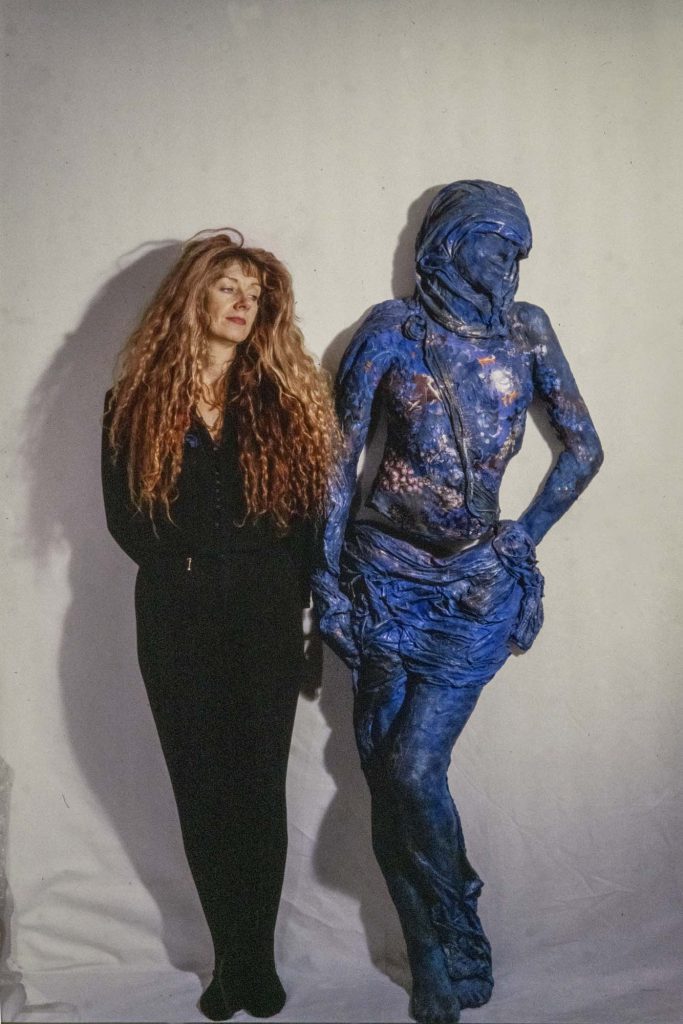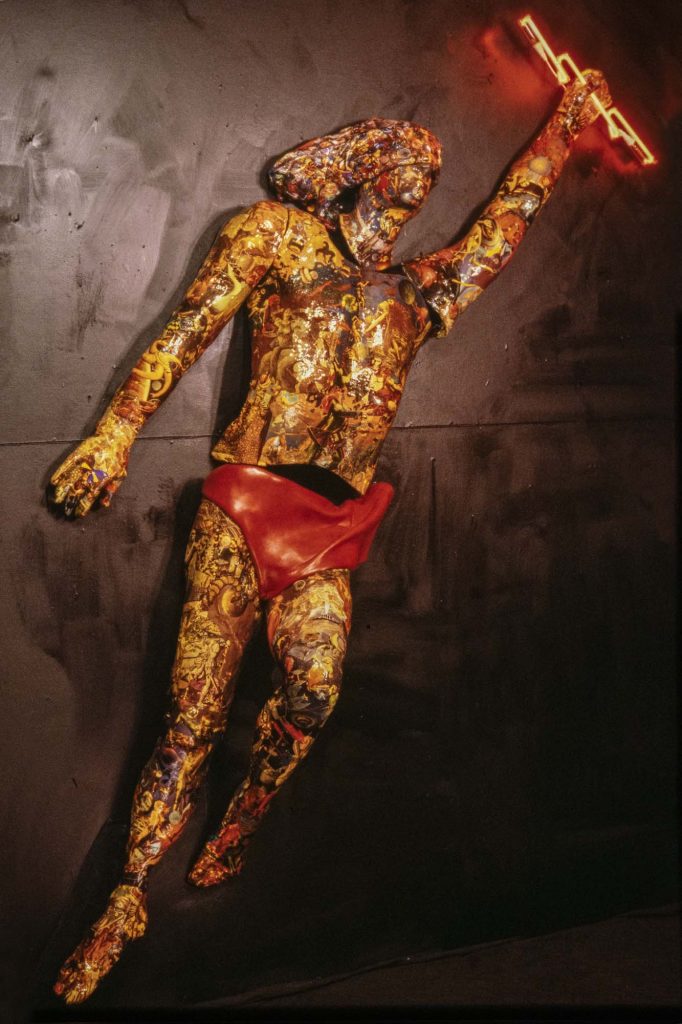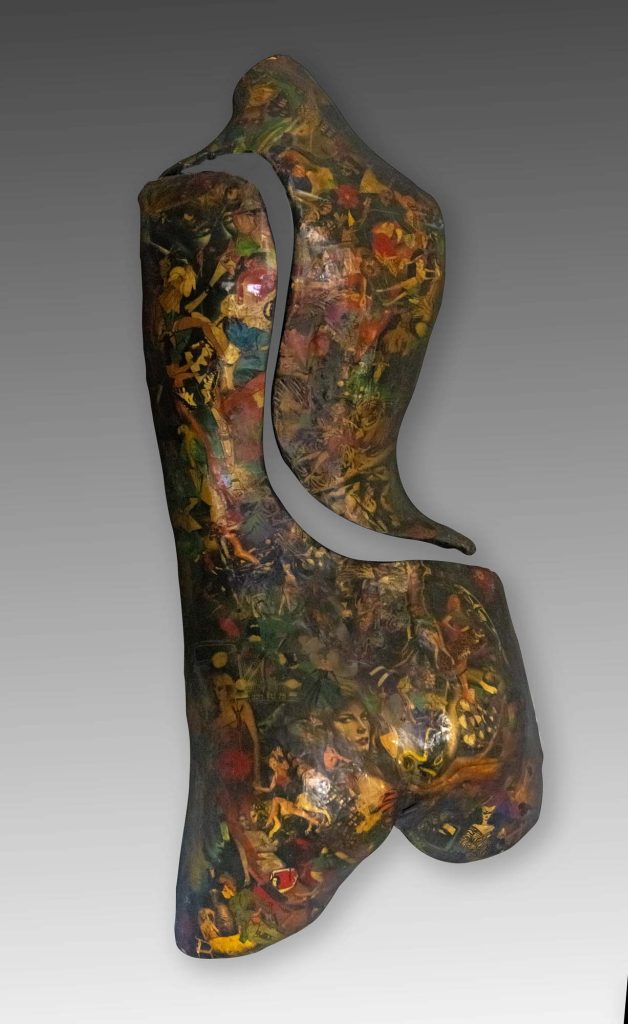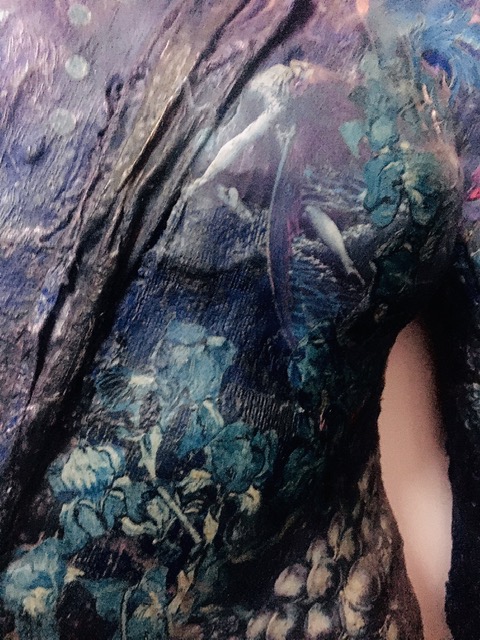1980 – 2019
Born in Scotland, Francesca studied sculpture with Harry Batty, a disciple of Henry Moore, in Scawsby College, Doncaster, UK. In 1985, she moved to Paris where she had her first show of sculptural drawings in the Village Voice. Soon after, she had her first one-woman show of sculpture, at the Caroline Corre Gallery in St-Germain-des-Prés.
She became the first sculptor to do collage on sculpture. Initially, she worked with reinforced plaster covered with cuttings from various fine arts reviews, comics, and magazines. Each piece is unique since the hundreds of individually selected collaged images all pertain to the title of the piece, as can be seen in ‘Macho Man’ (1986) and ‘WOW!’ (1997).
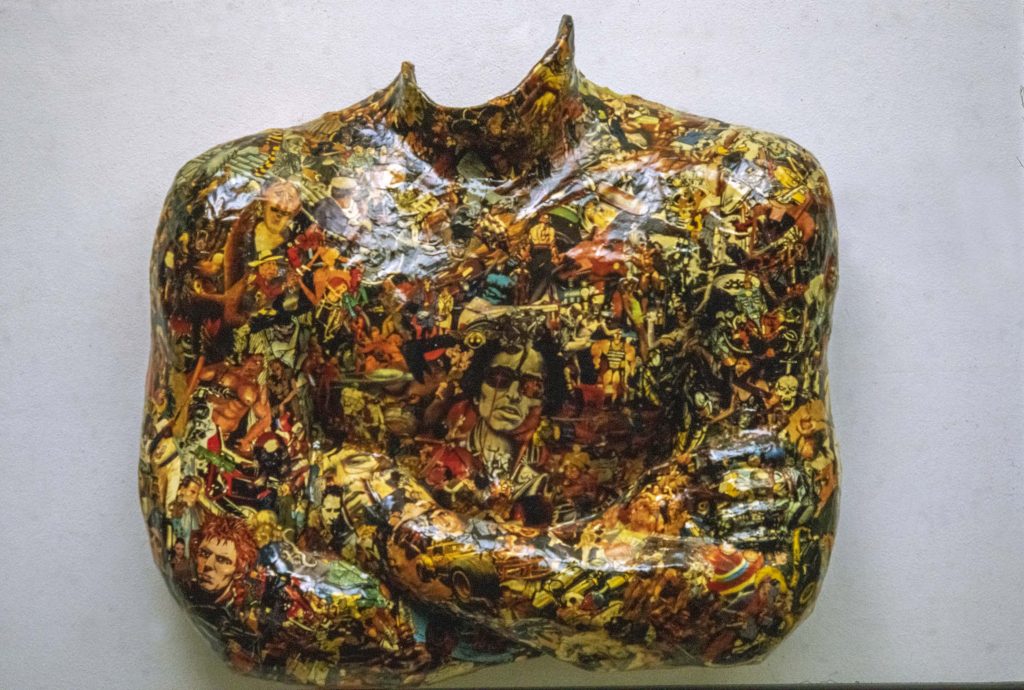
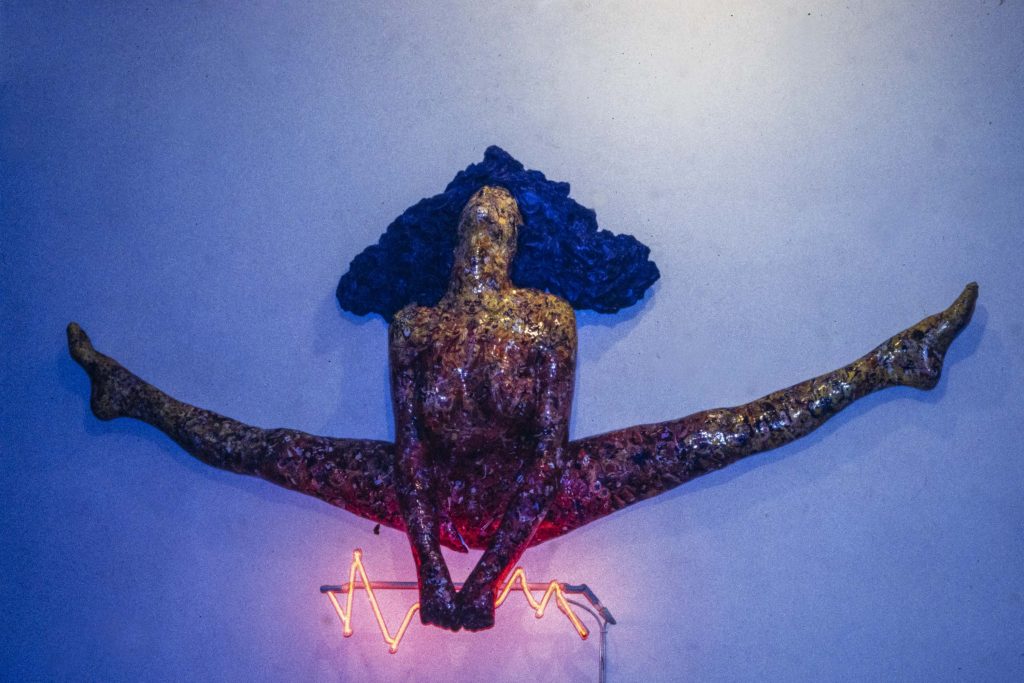
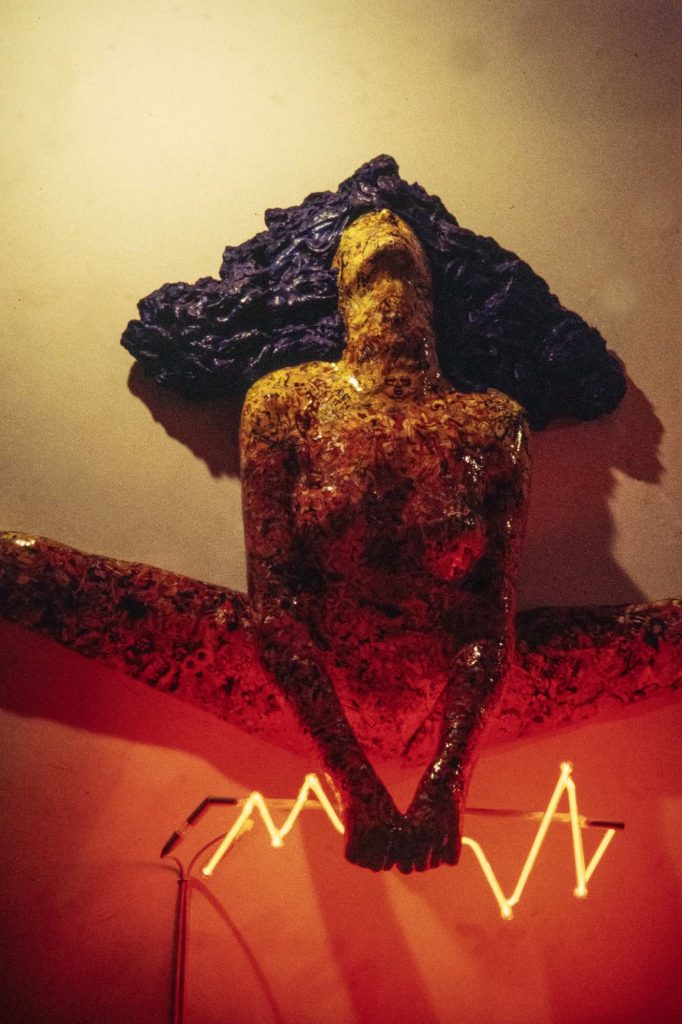
Later, she ventured into highly detailed micro cut-outs, integrating them to form a fluid painting on the sculptures, a French journalist then describing the Collage Sculptures as ‘dreaming skin’.
Storytelling sculpture: The Collage-Sculptures
She believes the cut-out inspiration started in her childhood. Bedridden from polio in her very early childhood, “when there’s no ego”, “I started to create dream-worlds with the scraps my mother handed me to play with”, she says. “Like a phoenix coming out of the ashes to tell stories”. “I couldn’t interact with children, so I interacted with images, I created my visual world… because I couldn’t walk.” “As for the love of visual storytelling, I’m quite sure it comes from my Celtic ancestry!”.
Via the images intricately placed on their ‘skin’, the Collage-Sculptures are paintings, works of storytelling, and exchange with other artists, epochs, as well as contemporary pop and visual culture. In ‘Saint Jacques de Compostelle’, 2m20, (198X), the collage presents the reconstructed history of Catholicism through its imagery, readable on the Saint’s body, sculpted as he is walking through the mountains.
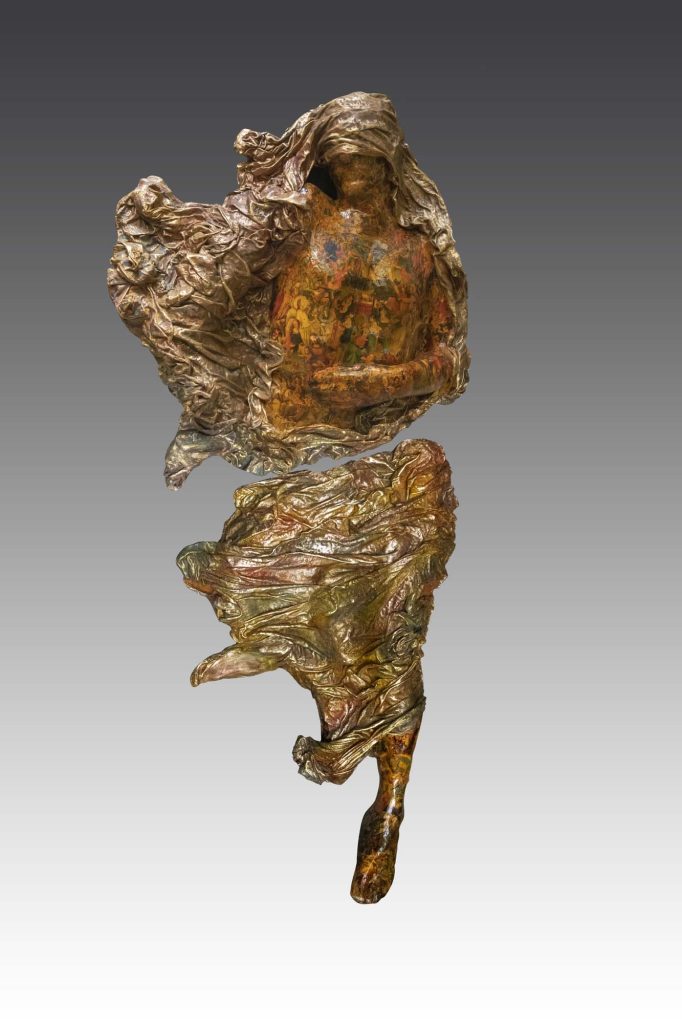
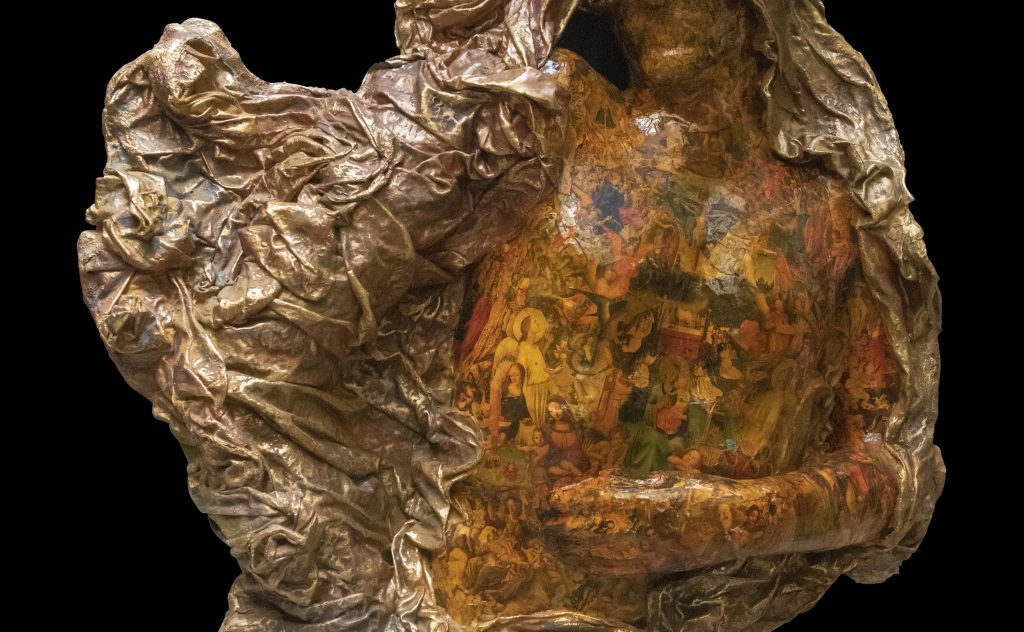
In ‘Marat’ (1989), David’s iconic figure is covered in cuts-out taken from the futuristic science-fiction universe, playfully disassociating the figure and its time.
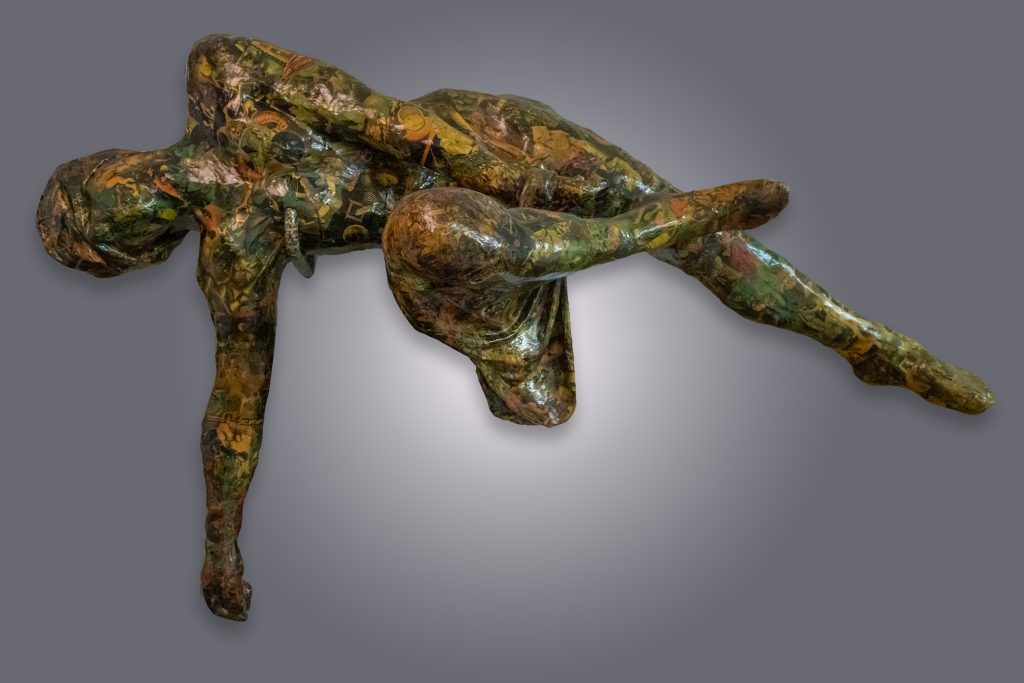
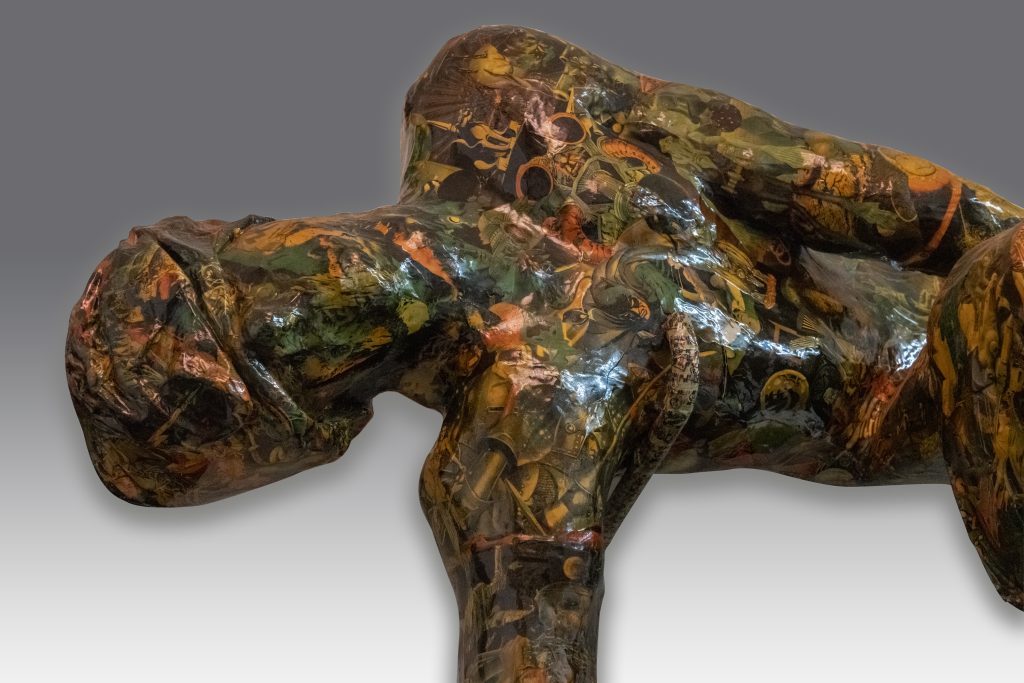
To entice people into the sculptural world at a time when sculpture was considered less attainable than painting, Francesca worked predominantly with mural sculpture. She explains, “In many ways, when it’s on the wall, it can be as dramatic and imposing as a 3-dimensional sculpture… without taking up as much space.”
She completed this series with the life-size triptych ‘Mutants’ (1990) which was exposed in Germany on a bed of red pigment, and where she worked on single blocks of separated colour (yellow, blue, and white), rather than with the technicolour effect of the previous Collage-Sculptures; and ‘WOW!’, 2m60, where we go through the primaries, from blue to yellow to red, as ‘She’ leaps to the joy of music over a red neon radio wave. In its essence, Francesca’s work is intensely celebratory.

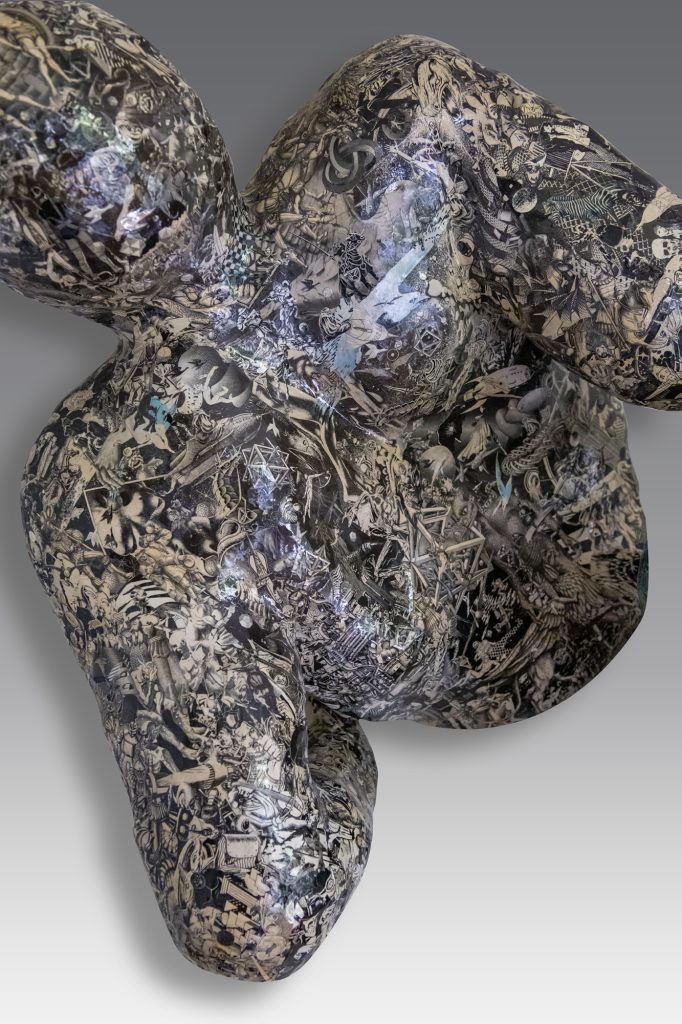
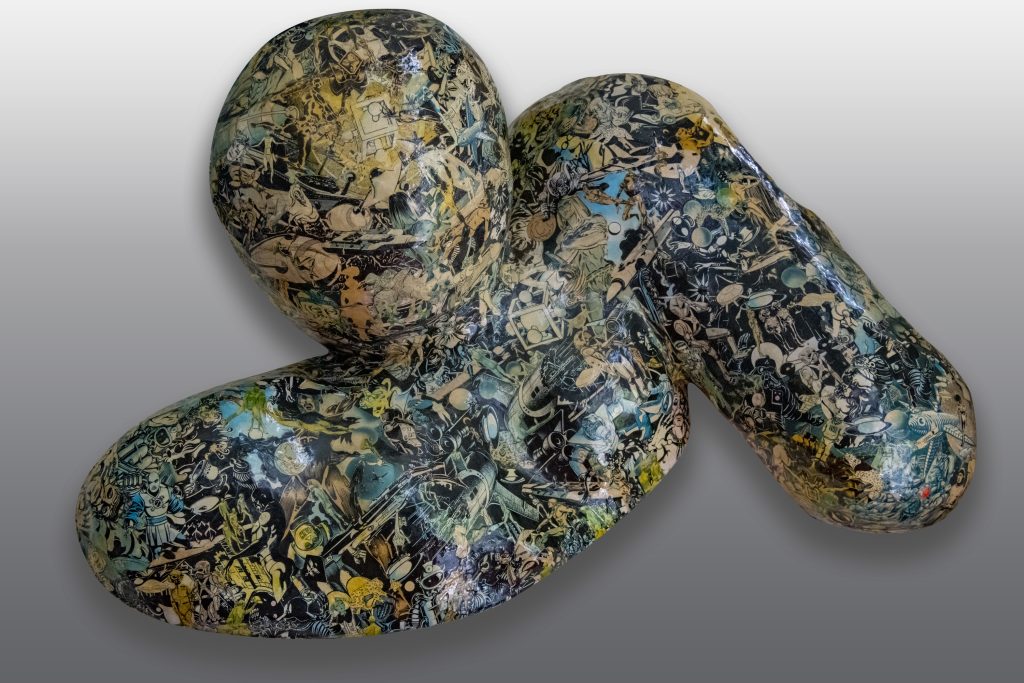
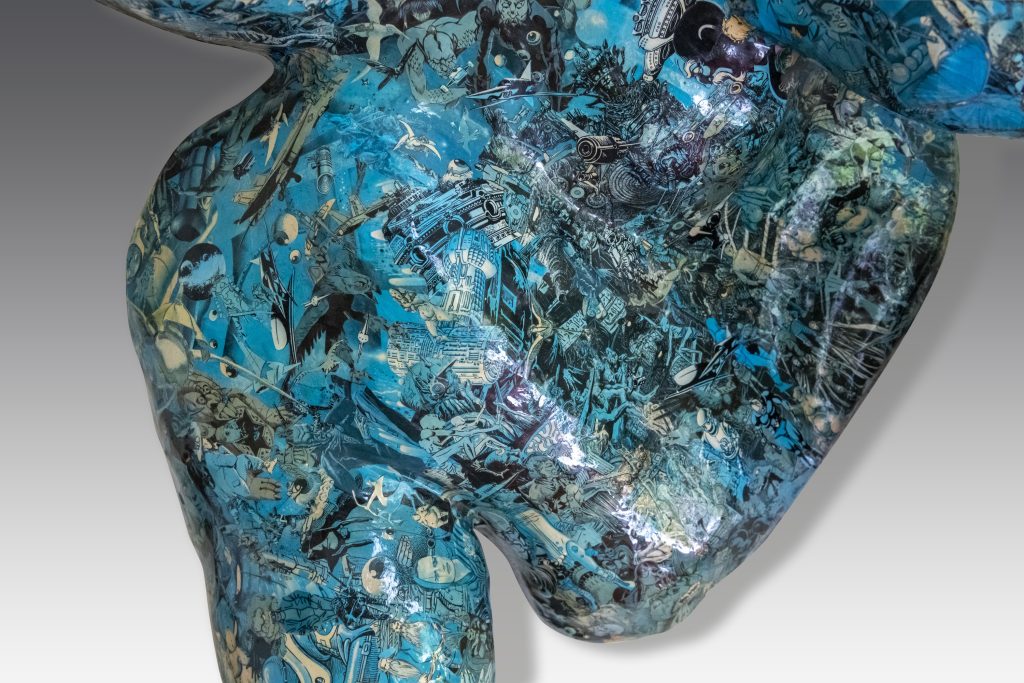
‘Reducing collage’
Having pushed the boundaries of her initial work, Francesca then moved onto a new direction, creating her own material from a conglomerate base of stone, bronze, various minerals, and pigment powders. Using less collage, as if pulling away from it, and then weaving the cut-outs into the textural background of the material rather than covering the surface, she experienced this as ‘reducing gradually her use’ of collage cut-outs.
She also added physical elements to the surface, such as real (Yorkshire) coal, mother of pearl and bronze pigments (‘Blue Lady’, 1997), and actual fabric (leather in the helmet of ‘Thor’ (19??), the négligé see-through black silk superimposed in ‘Feminine’ (198?)), creating her own material, and incorporating storytelling through it. Over two decades, she created a body of work which experiments through the genres of collage, painting, storytelling, and sculpture, to deliver a highly original, and highly personal view of sculpture.
